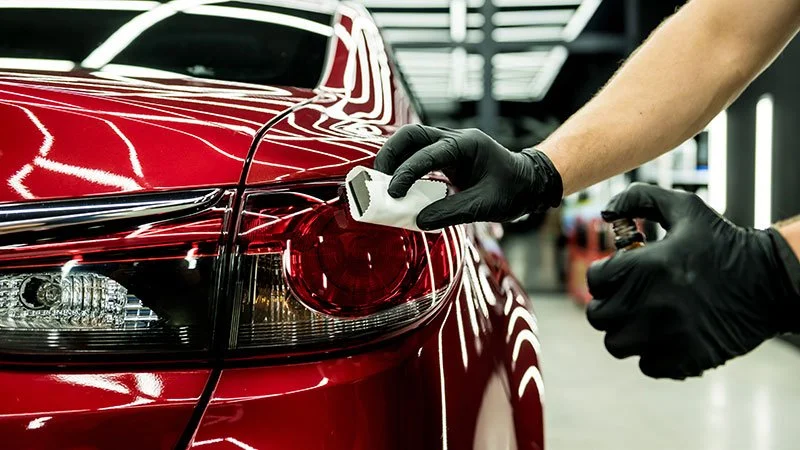Why Cleaning Your Steering Wheel Matters
Your car’s steering wheel is one of the most frequently touched surfaces, making it a magnet for dirt, oil, and bacteria. Over time, neglecting this essential part of your vehicle can lead to unsightly grime buildup, unpleasant odors, and even faster wear. A clean steering wheel not only looks great but also promotes hygiene and ensures a better grip for safe driving.
In this blog, we’ll walk you through how to clean a steering wheel effectively, answer common questions, and share professional tips to help you maintain a spotless, germ-free interior. Let’s dive in!
Why You Should Clean Your Steering Wheel Regularly
1. Hygiene and Health
A steering wheel can harbor up to 700 bacteria per square inch, making it dirtier than a public toilet seat. Regular cleaning reduces the risk of germs transferring to your hands and face.
2. Aesthetic Appeal
A clean steering wheel enhances your car’s overall appearance, ensuring it looks well-maintained and inviting.
3. Safety
Grime buildup can make the surface slippery, compromising your grip. Cleaning restores the texture, ensuring safe handling.
How to Clean a Steering Wheel: Step-by-Step Guide
Step 1: Identify the Material
Before you start, check the steering wheel’s material to avoid using products that could damage it. Common materials include:
Leather
Plastic or polyurethane
Alcantara (synthetic suede)
Wood
Step 2: Gather Your Supplies
Here’s what you’ll need:
A microfiber cloth
Mild soap or specialized cleaner (leather, plastic, or Alcantara-specific)
A soft-bristle brush or scrub ninja
Isopropyl alcohol (for disinfecting)
Leather conditioner (if applicable)
Step 3: Clean the Surface
Leather Steering Wheels:
Use a leather cleaner or a mixture of mild soap and water.
Apply the cleaner to a damp microfiber cloth, not directly on the wheel.
Gently wipe the surface, focusing on high-touch areas.
For tough spots, use a soft-bristle brush.
Plastic or Polyurethane Steering Wheels:
Use an all-purpose interior cleaner.
Spray the cleaner onto the cloth and scrub gently.
Pay attention to textured areas where dirt hides.
Alcantara Steering Wheels:
Use a dedicated Alcantara cleaner.
Gently scrub in circular motions with a damp cloth. Avoid soaking the material.
Wood Steering Wheels:
Use a mild cleaner and avoid excess moisture.
Buff the surface with a dry microfiber cloth to maintain its shine.
Step 4: Disinfect
After cleaning, wipe the steering wheel with a cloth dampened in isopropyl alcohol (70%) to kill germs. Avoid using alcohol on Alcantara or unfinished leather.
Step 5: Condition (For Leather Wheels)
Finish by applying a leather conditioner to keep the material soft and prevent cracking. Buff gently for a polished finish.
Tips how to Clean Steering Wheel
Tools You’ll Need to Clean Your Steering Wheel
1. Microfiber Cloths
Soft and non-abrasive, microfiber cloths are ideal for wiping down surfaces without scratching or leaving lint. Keep multiple cloths handy—one for applying the cleaner and another for drying.
2. Cleaning Solution
Choose a cleaner based on your steering wheel material:
- Leather: Leather-specific cleaner and conditioner.
- Plastic/Polyurethane: All-purpose interior cleaner.
- Alcantara: Dedicated Alcantara or suede cleaner.
- Wood: Gentle, non-abrasive wood cleaner.
3. Soft-Bristle Brush or Toothbrush
A soft-bristle brush helps you reach tight crevices and clean textured areas. This tool is especially useful for removing stubborn grime and dirt.
4. Isopropyl Alcohol (70%)
Used for disinfecting the steering wheel, isopropyl alcohol eliminates germs and bacteria. Avoid using this on Alcantara or unfinished leather.
5. Spray Bottle
A small spray bottle helps you apply cleaning solutions evenly without oversaturating the surface.
6. Bucket with Warm Water
If using a mild soap solution, you’ll need a bucket of warm water for rinsing and diluting the cleaner.
7. Leather Conditioner
For leather steering wheels, a high-quality conditioner prevents cracking and keeps the material supple.
8. Detailing Brushes
For intricate or textured steering wheels, small detailing brushes allow for precision cleaning in hard-to-reach spots.
9. Disposable Gloves
Wearing gloves protects your hands from harsh chemicals and ensures hygienic cleaning.
10. Dry Towels or Rags
Use dry towels or rags for wiping down excess moisture and ensuring the steering wheel is completely dry after cleaning.
Optional Tools for Enhanced Cleaning
Steam Cleaner: A steam cleaner is an excellent tool for deep cleaning and disinfecting, especially for Alcantara or fabric materials.
UV Sanitizer: For an added layer of germ removal, a UV sanitizer can kill bacteria without chemicals.
FAQs About Cleaning Steering Wheels
1. How often should I clean my steering wheel?
Ideally, clean your steering wheel once a week, especially if you drive daily or share your vehicle with others.
2. Can I use household cleaners on my steering wheel?
Avoid harsh chemicals like bleach or ammonia, as they can damage the material. Use products designed for automotive interiors.
3. How can I remove sticky residue from my steering wheel?
Use isopropyl alcohol or a mild all-purpose cleaner with a microfiber cloth. For stubborn spots, a soft-bristle brush can help.
4. Can I clean my steering wheel with baby wipes?
Baby wipes are not recommended as they may leave a residue or fail to clean thoroughly.
5. Is it safe to use water on my steering wheel?
Yes, but avoid soaking the surface. Use a damp cloth to control moisture levels.
Expert Tips for Keeping Your Steering Wheel Clean
How To keep steering wheel clean
1. Keep Cleaning Supplies Handy
Store a small kit in your car with a microfiber cloth and a travel-size cleaner for quick touch-ups.
2. Wash Your Hands
Minimize dirt transfer by washing your hands before driving.
3. Use a Steering Wheel Cover
A cover protects the wheel from direct contact with dirt, sweat, and oils, making it easier to maintain.
4. Avoid Eating or Drinking While Driving
Food crumbs and spills can easily end up on your steering wheel, accelerating grime buildup.
5. Deep Clean Periodically
Every few months, perform a thorough cleaning to address hidden dirt and bacteria.
The Science Behind a Clean Steering Wheel
Clean Steering Wheel
1. Steering Wheels and Bacteria
A study by the National Center for Biotechnology Information found that car interiors, especially steering wheels, are hotspots for bacteria due to frequent touch and limited cleaning.
2. The Role of pH-Balanced Cleaners
pH-balanced products are crucial for materials like leather and Alcantara. They maintain the material’s integrity while effectively removing dirt.
3. Longevity Benefits
Regular cleaning extends the life of your steering wheel material, reducing wear and tear and maintaining resale value.
Why DIY Steering Wheel Cleaning is Worth It
1. Cost-Effective
Professional cleaning services charge $50–$100, but DIY cleaning costs just a few dollars per session.
2. Immediate Results
DIY cleaning lets you address issues immediately, avoiding long-term damage.
3. Easy Maintenance
With minimal effort and tools, you can keep your car interior looking like new.
Conclusion: A Cleaner Steering Wheel Equals a Better Driving Experience
Your steering wheel is the heart of your driving experience, and keeping it clean is essential for hygiene, aesthetics, and safety. By following this guide, you can easily maintain a spotless, germ-free steering wheel that enhances your car’s interior and ensures a more enjoyable drive.
Regular cleaning doesn’t just protect your health—it also preserves the value and appearance of your vehicle. So, don’t wait—grab your cleaning supplies today and give your steering wheel the attention it deserves!







